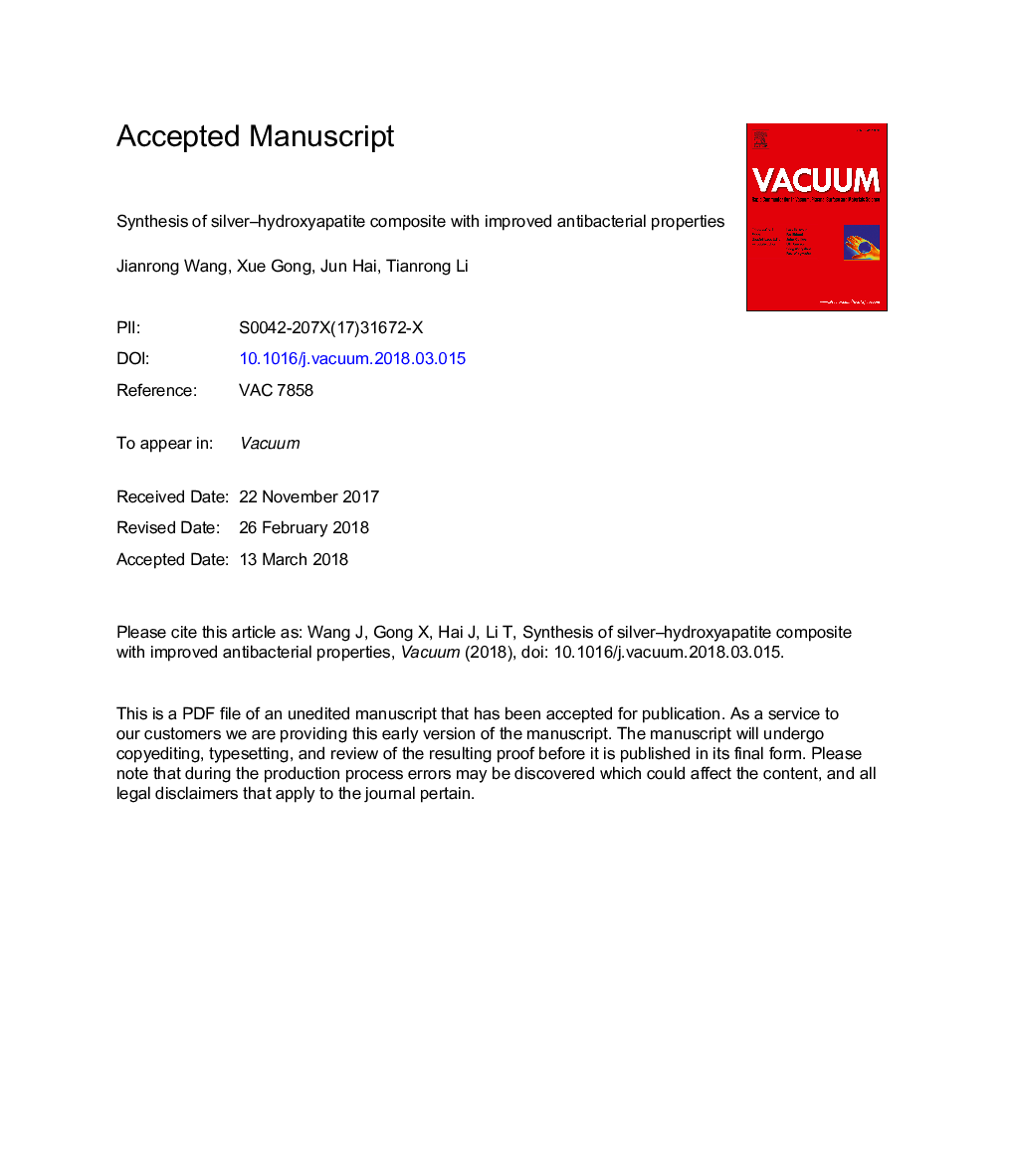| Article ID | Journal | Published Year | Pages | File Type |
|---|---|---|---|---|
| 8044369 | Vacuum | 2018 | 18 Pages |
Abstract
Hydroxyapatite is an important biomaterial for potential clinical applications. However, the lack of antibacterial activity restricts its application. To overcome this defect, here we prepared a silver-incorporated hydroxyapatite composite, Ag-HA, and tested its antibacterial properties. Via the chemical precipitation of the suspension of chitosan, CaCl2 and NaH2PO4, an intermediate, chitosan-hydroxyapatite composite CS-HA, was obtained. After the reduction of AgNO3 in CS-HA suspension by NaBH4, centrifugation and calcination, Ag-HA was collected. As the reference materials of Ag-HA, the hydroxyapatite paricle HA-2 was gained via the calcination of CS-HA. To illustrate the role of chitosan in the preparation, the hydroxyapatite paricle HA-1 was also synthesized with a similar method to HA-2 except for the use of chitosan. Powder X-ray diffraction, X-ray photoelectron spectroscopy, fourier transform-infrared spectroscopy, and scanning electron microscope were used to confirm and character Ag-HA, HA-1 and HA-2. We found, by using chitosan, Ag-HA and HA-2 had more regular morphology than that of HA-1. The antimicrobial activities of Ag-HA and HA-2 against Gram-positive Staphylococcus aureus and Gram-negative Escherichia coli were also evaluated via optical density tests. The results indicate the incorporation of silver could endow hydroxyapatite particle with excellent antibacterial effect.
Related Topics
Physical Sciences and Engineering
Materials Science
Surfaces, Coatings and Films
Authors
Jianrong Wang, Xue Gong, Jun Hai, Tianrong Li,
